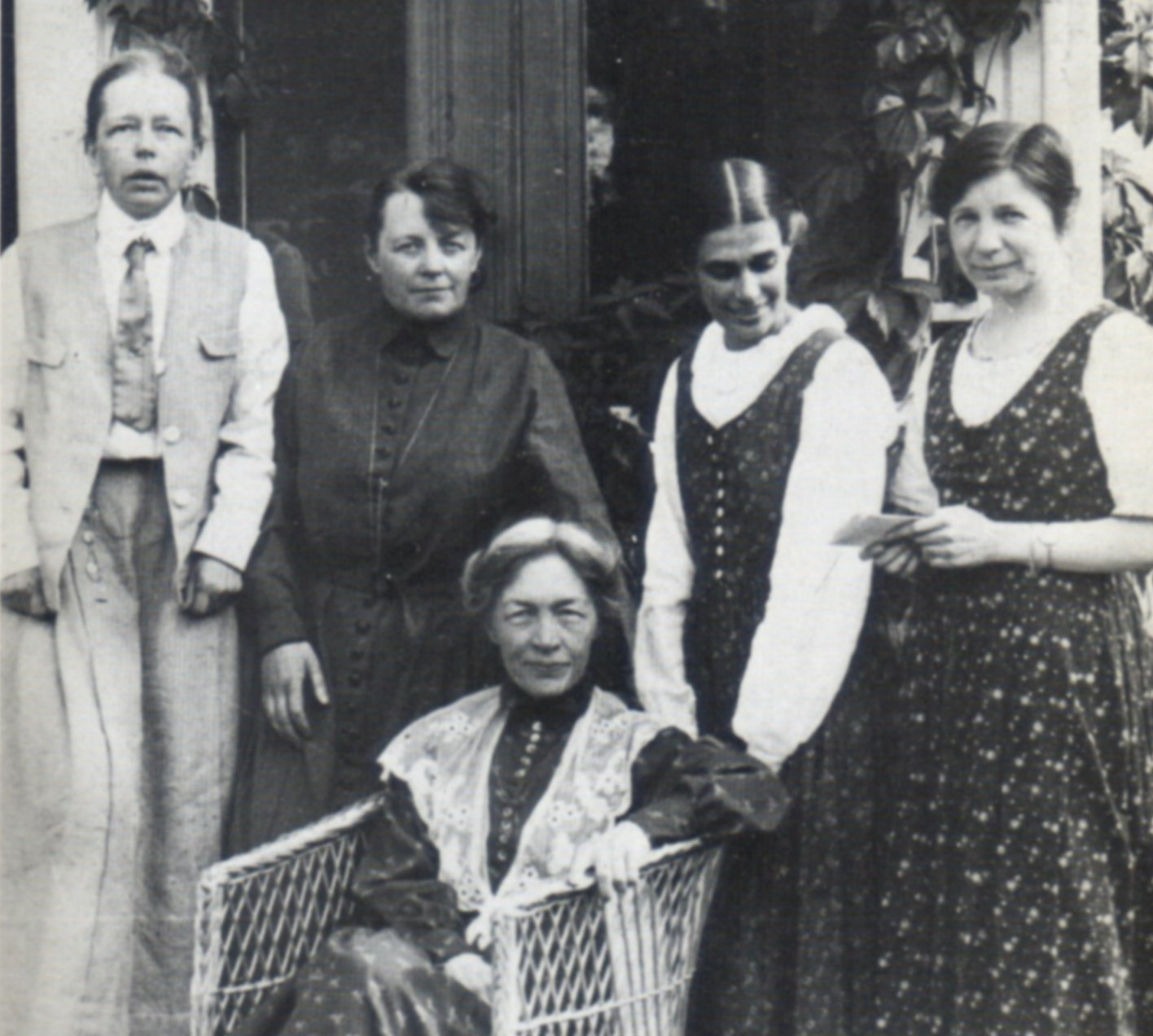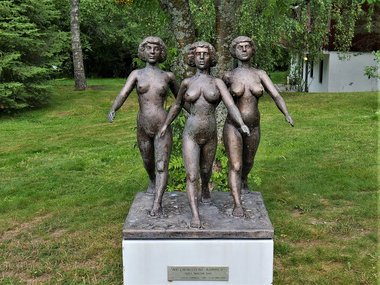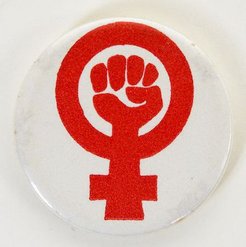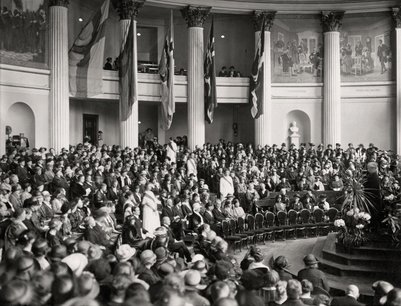Feminism in the Nordics: An historical overview to 1990
Feminism in the Nordics began in the second half of the 19th century with the struggle for female suffrage. The development of the welfare state in the era following the Second World War provided the political stability to allow feminist ideas to grow, but equality was far from being reached. While many key pieces of literature and feminist thinking preceded second-wave feminism, it was in the 1960s and 1970s that the Nordic movement really began to flourish - with the 'Redstockings' and many other groups raising consciousness, influencing policy and working across borders.

In the Nordic countries feminism, defined by the Oxford English Dictionary as the movement associated with the "advocacy of equality of the sexes and the establishment of the political, social, and economic rights of women", has its roots in the campaigns for women’s rights in the second half of the 19th century. First-wave feminism resulted in the granting of female suffrage in Finland (1906), Norway (1913), Denmark and Iceland (1915), and Sweden (1919). The relative political stability in the Nordic countries and the development, from the Second World War onwards, of welfare states in the majority of them was beneficial to the efforts to improve gender equality. A unique Swedish venture was the Women Citizens’ College at Fogelstad, 1925-54, established to provide the newly enfranchised women with the knowledge and confidence they needed to function as full citizens and, although never explicitly feminist, an exceptional space for the development of radical thinking on women and children, peace, and the environment.
But, by the 1950s, women in the Nordic countries remained far from equal in political, economic and social terms. Alva Myrdal and Viola Klein's Women’s Two Roles: Home and Work from 1956 (Swedish translation 1957) argued for the continuing relevance of the kind of social democratic thinking introduced in Sweden in the 1930s, while the Norwegian feminist Margarethe Bonnevie highlighted the role of the father in Fra mannsamfunn til menneskesamfunn (1957) (From a Society for Men to a Society for Human Beings). A joint Swedish-Norwegian sociological study by Edmund Dahlström and others, published in 1962, helped shift the debate towards gender roles, and Kvinnors liv och arbete (The Changing Roles of Men and Women, 1967) was to have a considerable impact on Swedish state policy in the 1960s and 1970s.

PICTURE: Sculpture “Nyfeministene kommer” (The New Feminists are coming) is situated in front of the Women's Museum (Kvinnemuseet) in Kongsvinger, Norway. Photo: Wikimedia Commons (CC BY-SA 4.0).
The Redstockings and other key groups
In Sweden, then, a public debate on gender roles preceded the arrival of second-wave feminism, and this was also the case in Finland, where the effects of second-wave feminism were limited. In Denmark, the first demonstration by the Redstockings (Rødstrømpebevægelsen) took place in April 1970 with the demonstrators, inspired by the women’s movement in the US, the UK and the Netherlands, protesting against the exploitation of women by the fashion and cosmetics industries. Working not for equality but for liberation and social change, the Danish Redstockings were soon established throughout Denmark, with Raudsokkahreyfingin also forming in Iceland in 1970. In Norway the New Feminists (Nyfeministene) emerged in 1970 and the Women’s Front (Kvinnefronten) in 1971, the latter with socialist and Marxist sympathies.
The Swedish Group 8 (Grupp 8) had formed in 1968, working for women’s liberation in a socialist system, but did not go public until 1970. With the exception of the Norwegian Women’s Front, these organisations shared non-hierarchical structures, with a multitude of consciousness-raising groups playing a key role. They also initiated major campaigns, for example, for free abortion and against pornography and prostitution. The exhibition Kvinnor (Women), organised by Group 8 and shown at Moderna museet, Stockholm, in 1972, attracted huge crowds and subsequently toured the country.
Second-wave feminism inspired and was inspired by a range of publications, e.g. Swedish Frihet Jämlikhet Systerskap. En handbook för kvinnor (1971) (Freedom Equality Sisterhood. A handbook for women) by Maud Hägg and Barbro Werkmäster, and the Danish Derfor Kvindekamp (1973) (Why women need to fight) by Susanne Giese. New magazines and journals were also launched, one of the most prominent being Kvinnobulletinen (The Women’s Bulletin), published by Group 8, 1971-96.

PICTURE: Symbol of the Women's Movement or radical feminism, consisting of the astronomical and astrological symbol of the planet Venus, also known as symbol of the Roman goddess Venus, and the clenched fist, symbol of 1960's and early 1970's "power" movements. Photo: Europeana (CC BY-NC-ND 4.0).
Women's studies and Nordic cooperation
From the mid-1970s onwards, women’s studies began to appear as an academic field of study, initially in conjunction with established disciplines such as sociology or comparative literature. In the 1980s, Centres for Women’s Studies were established at universities in all the Nordic countries, and by the late 1990s each country also had at least one journal devoted to gender and women’s studies. Up to the late 1990s, research into women’s studies in the Nordic countries focused on women’s daily lives including education, childcare, and employment, with the results often feeding into societal reforms. In the early 2000s, many of the Centres for Women’s Studies became Centres for Gender Studies, with a greater emphasis on research on e.g. the body, identity and, of course, also masculinity and queer.
Cooperation across the Nordic countries has been an important feature of women’s studies since the early 1980s, with the Nordic Forum for Research on Women in the Nordic Countries (Nordisk forum for kvindeforskning i Norden) established in 1981. Nora - Nordic Journal of Feminist and Gender Research was launched in 1993 with the aim of internationalising women’s studies in the Nordic countries. In 1995 the Nordic Institute for Women’s Studies and Gender Research (Nordisk institute for kvinde- og kønsforskning, NIKK) was established in Oslo. Cooperation, ranging from specific subject areas to disciplinary fields or interdisciplinary studies, has had a considerable impact on the movements and on research, as well as on state feminism, in the various Nordic countries.

PICTURE: The Nordic Women's Rights Congress in Helsinki June 3rd-5th 1924. Photo: Europeana, Finnish Heritage Agency (CC BY-NC-ND 4.0).
A feminist political party existed in Iceland, 1983-98. Originating in a separate list of women candidates for the election to the Althing in 1983, the Women’s List (Kvennalistin) increased the proportion of women in the Icelandic parliament to 25% by 1995. This was perhaps a precursor to the Swedish feminist party Feminist Initiative (Feministiskt initiativ (Fi)), which was launched in 2005 and which, in the European elections in 2014, won a seat in the European parliament.
This article has been published posthumously.
Further reading:
- Drude Dahlerup and Britta Gulli, 'Women’s Organizations in the Nordic Countries: Lack of Force or Counterforce?', in E. Haavio-Mannila, ed., Unfinished Democracy: Women in Nordic Politics (Oxford: Pergamon Press, 1985), pp. 6-36.
- Inga Dahlsgård, ed., ’Kvindebevægelsens hvem-hvad-hvor’ [The Women’s Movement who-what-where] (Copenhagen: Politikens forlag, 1975).
- Drude von der Fehr, Bente Rosenbeck and Anna Jónasdóttir, eds., ‘Is there a Nordic feminism? Nordic feminist thought on culture and society.’ (London: UCL Press, 1998).